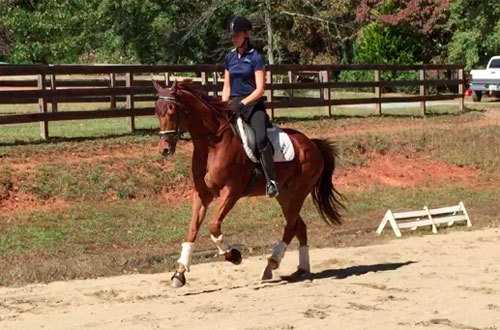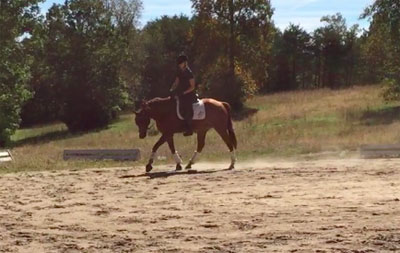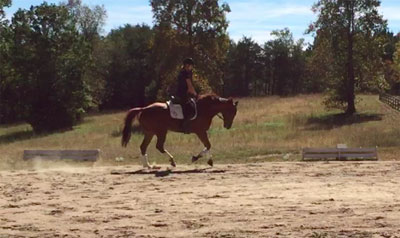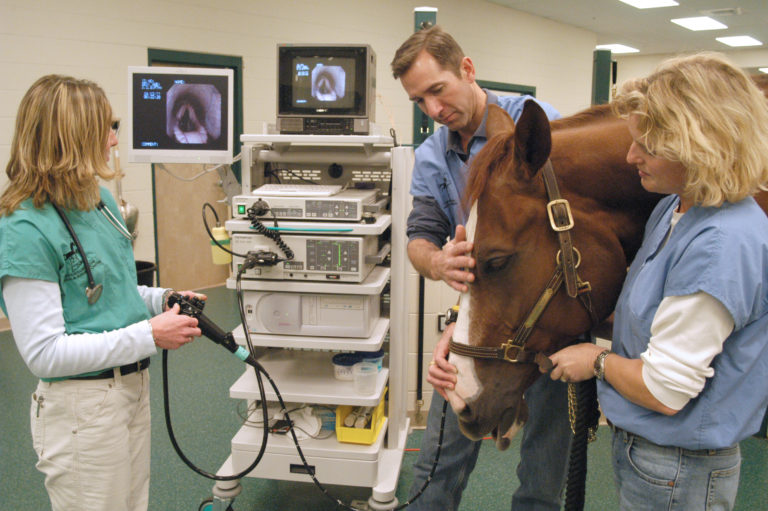As promised, I wanted to feature our continuing work on adjustability within the gaits but this week, at the canter.
Forrest’s canter departs remain a work in progress: the left, naturally, for this OTTB is quite easy: willing and on the aids. As his left hind gets stronger, his right canter depart will continue to improve. But at this point, it can sometimes still be hit or miss and one, especially the one writing this blog, must remain patient! Strengthening simply cannot be rushed and if I allow my ego to rise up and keep pushing for that right depart before he’s truly strong enough, all I’m going to do is teach Forrest that right canter departs are unpleasant, tension-filled experiences, which is hardly fair as he’s been so willing about everything else.
When we do have a good day, my aim is to show Forrest that cantering is no big deal. One might think that an ex race horse, who spent his career galloping, would find cantering around an arena a piece of cake. But they don’t: to canter around on the bit, carrying a rider, requires a big shift in their center of gravity, balance and strength. The gallop is a four-beat gait as opposed to the canter’s three-beat, and the gallop tends to be naturally more on the forehand as there is no period of suspension.
To help Forrest’s rhythm and suppleness, we begin our canter tracking, naturally, left: on the aids and connected down the long side.
As we come into the short side, I ask for a 20-meter circle, and when I know I have his shoulders straight and Forrest honestly into the outside rein, I sponge the outside rein a bit, open the fingers of my inside hand, keep my legs on, sit a little lighter and feed him a couple of inches of rein. If all goes well, he will follow the rein and begin to stretch over his back and follow the rein.

I can then take back the rein, ride his neck back up and then land in trot, continuing the stretch.

After lots of praise and a walk break (as well as a cookie for effort, for both of us), we pick up the reins and repeat the exercise to the right, establishing as balanced a canter as I can get to begin with.


Then asking for the relaxing and stretching of the frame while, hopefully, not falling on the forehand.
It’s been a good day! As always, I like to point out for those of you following this blog that, like everybody else, we have our off days. Sometimes I don’t feel as though I’m riding very effectively. Other days Forrest is feeling particularly fresh and a squirrel rustling in the leaves turns him into a giant Sit and Spin. The important thing is to remember, I think, is a quote by Klaus Balkenhol during an interview regarding progress: “You go faster by going slower.” For me, that means training without tension, resisting the temptation to get that right canter if it’s the last thing we do today (or whatever the goal is) and always return to basics the moment a problem rears its head.












